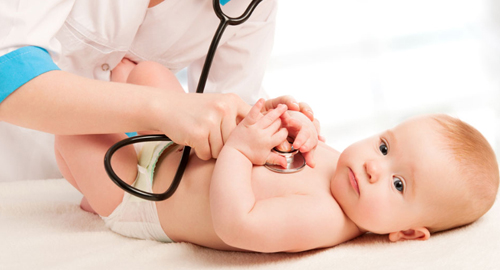Dr Amit Misri
As India progresses in all other fields it becomes imperative that health sector also keeps the same pace. This includes having a basic knowledge about heart diseases which are present from birth, their causative factors, steps for prevention and finally treatment modalities available.
Congenital Heart Disease (CHD) are defects in heart that are present since birth. It is believed that for every 1000 live births there will be 6-8 new-borns with heart defects. CHD remains an important factor in neonatal mortality rates and if we have to bring it down we have to address this issue. Fourty percent of babies born with CHD have life threatening disorder which needs immediate and accurate diagnosis and subsequently timely intervention. On the other hand, some CHD do not manifest in new-born period or childhood and may only be diagnosed during adolescent or adulthood. Therefore we need to understand that there is a wide spectrum as far as age of presentation is concerned and same holds true for symptoms.
New-borns with critical CHD usually present with deep and worsening cyanosis (bluish discolouration), fast breathing, and difficulty in feeding and excessive sweating. There are changes in physiology at time of delivery when baby moves from mother’s womb to outside world. Babies with critical CHD tolerate these changes poorly and may get decompensated. These type of new-borns require early and accurate diagnosis followed by timely medical or surgical care.
Milder forms of CHD may manifest late with symptoms of inadequate weight gain, exertional breathlessness, easy fatigue, chest pain, palpitations or loss of consciousness. Some CHDs like Atrial septal defect, small ventricular septal defect may present in adulthood especially at time of pregnancy in females. Therefore it is advisable to get a proper check-up if a person feels any of the above mentioned complaints.
With rapid advances in science and technology, patients with CHD are now a days picked up early. Newer modalities of investigation like colour Doppler echocardiography, 3D echocardiography, cardiac CT scan and catheterization and cardiac MRI now allow us to have a diagnosis with utmost precision. Simultaneous advancement in treatment methods have led to very good outcomes. Miniature hardware now helps us to treat infants at day one of life and weight as low as 1.5 kg. Surgical results have dramatically improved over time. Cardiac interventions in cath lab allow us to treat babies without even undergoing open heart surgery. Closing holes in and outside heart using special devices or opening tight stenotic valves with the help of balloons is becoming the primary choice of treatment. All those patients whose heart is beyond treatment or has completely failed also have a ray of hope. Heart transplantation is now performed in many elite centres in India.
All this has led to the end of an era where patients with heart disease were thought to be doomed. Poor quality of life and an agonising end was their fate. But now times have changed. These people can now not only live a normal life but can participate in all activities that a normal person can do. They can bear children and their lifespan is also expected to be at par with normal population. People who have been treated for CHD have now entered the mainstream and are doing all kinds of jobs even those that involve physical endurance.
One question that crosses the minds of all parents who have children with CHD is what led to it? And to be honest, in very few cases the causative factor can be traced. Mothers who have had exposure to radiation or certain drugs during pregnancy have increased incidence of babies having CHD. Babies who have other malformations or are syndrome (Down syndrome) are prone. New-borns of parents who already have or had a CHD have a slightly higher risk. All these factors attribute to only 10 -15% of CHD. In rest of 95% patients the cause remains elusive.
There are certain precautions that can avoid if not completely end the occurrence of CHD. Expectant mothers can start ingestion of folic acid tablets one to two months prior to conception. It is believed not only to help prevent CHD but also neural tube defects. Avoiding exposure to radiation and certain drugs during pregnancy helps in decreasing the chances of having a baby with CHD. High risk mothers should undergo foetal echocardiography at 18 -20 weeks of pregnancy to detect any abnormality in foetal heart. Babies born to mothers who are suffering from lupus have chances of heart block and should therefore be evaluated properly.
At the end, one must remember that with advances in knowledge CHD has no more remained a dreaded disease it once used to be. Children and adults suffering from heart defects can live a normal productive and healthy life provided they are treated. Timely diagnosis and appropriate treatment can save many a precious lives. This Valentine let us pledge to have a healthy heart for ourselves and for coming generations.
(The author is a Sr Consultant-Division of Paediatric Cardiology the Medicity Hospital Gurgaon)


